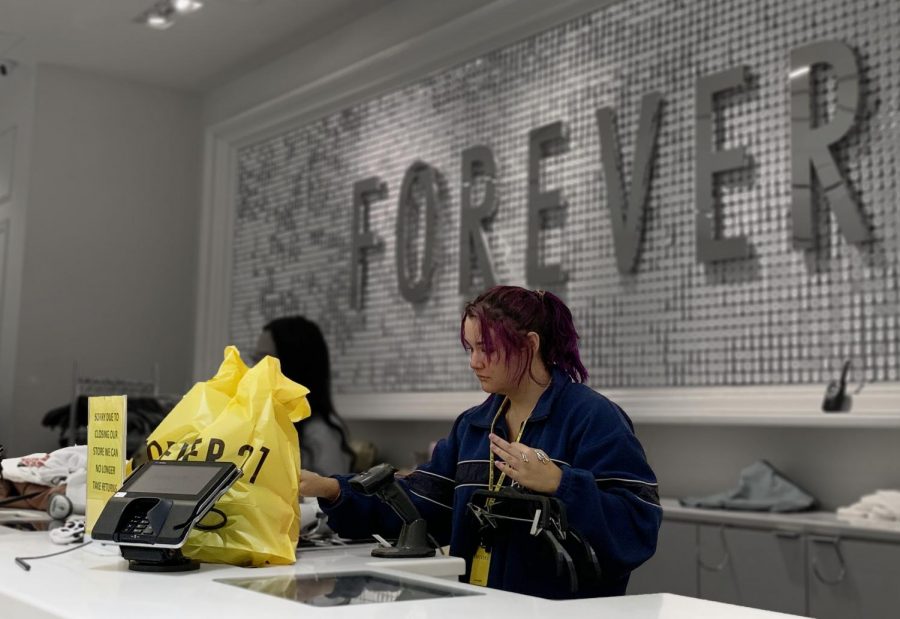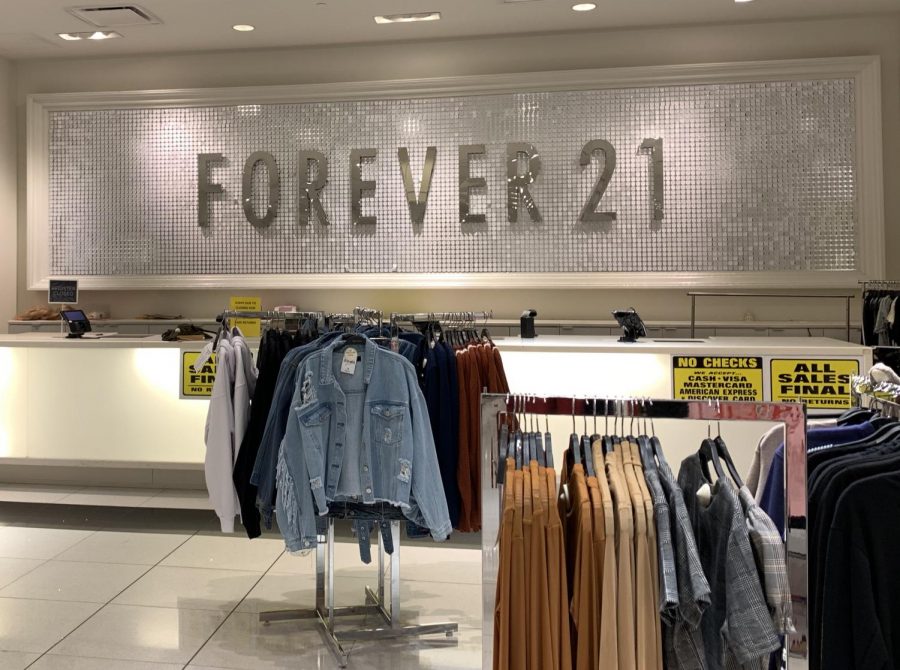Forever 21 was once the fashion empire feared by other retailers and grew faster than anyone could have anticipated; however, faced with the competition of fast fashion and internal collapse, the empire suddenly met its demise.
The first store opened with only $11,000. Starting in a 900-square-foot building in Highland Park, Los Angeles, it was named Fashion 21. The brand was popular among local Korean-Americans, and the founder sought to expand his influence. Born in South Korea, Forever 21’s founder, Do Won Chang, wished to live the American dream, and in 1981 he and his wife moved to America.
Fashion 21 began buying clothing from wholesale closeouts, which created the notorious discounted prices that the fast-fashion industry demands. In just the first year, the brand’s sales grew exponentially from $35,000 to $700,000, according to Business Insider.
However, the founder was determined to aim even higher. He changed the name of the store to Forever 21 in an attempt to appeal to people of both young and old age, centered around the idea that everyone wants to be 21, and stay that way forever.
According to Business Insider, Chang’s wife Jin Sook soon grew into the role of co-founder, approving 400 new designs every day, leading Forever 21 to become a fast-fashion empire. As a result, the store was not just following trends, it was producing them as they trended.
With fashion styles constantly changing, consumers of the industry want low-cost, trendy, and stylish clothes. The whole appeal of fast fashion is based on the speed of production and the low price the clothes sell for. To obtain lower costs, retailers turned to outsourced manufacturers, commonly in developing countries.
As the industry evolved, mass retailers who managed to outsource their production grew in size and gained market share, while those who didn’t outsource lost profit and their market share.
Forever 21 conformed to this expectation of outsourced manufacturing and kept growing.
“Forever 21 is growing like crazy, and the fast-fashion retailer is becoming a major threat to the rest of the industry,” said Kim Bhasin in a Business Insider article titled “The Competition Should Be Terrified Of Forever 21.”
In 2013 alone, the brand made $1.4 billion in sales.
Forever 21 rapidly climbed the fast-fashion hierarchy, showing how fast a company could thrive, and how quickly they could dive. However, in 2013, Forever 21 began to descend from its fast-fashion throne.
Other retailers caught up with Forever 21’s fast fashion as they struggled to produce enough original designs. According to Forbes, Forever 21 has been slammed with 50 copyright violation lawsuits since 2009, from Gucci to a small Canadian family business’ design.
Needless to say, their customers noticed.
“I think you can often find brands building off of each other’s ideas, but Forever 21 just blatantly copies other people’s ideas. I don’t want to shop there as much when all they do is take other people’s designs and make them cheaper. That’s not what I want to support,” said Maria Valle-Remond, a sophomore at Carlmont.
According to “An Analysis of the Fast Fashion Industry” by Bard College, fast fashion retailers spend a large amount of money on advertising, celebrity endorsements, and collaborations with designers.
Another aspect that comes hand-in-hand with the fast pace of production can sometimes be a shorter life span of the items.
“My friend bought an adorable turtleneck sweater during a closing sale at Forever 21, and she wore it once, then found a hole in the shoulder. She gave it to me, and I love wearing it. Still, it’s slowly unraveling with holes everywhere,” said Isabela Panisset, a sophomore.
However, Forever 21 is not alone in selling lower-quality items; it’s a common occurrence in the fast-fashion industry. Elizabeth Cline explores this in her book, “Overdressed: The Shockingly High Cost of Cheap Fashion,” claiming that a fast fashion product can be measured by the number of washes it takes to start falling apart. Some may even say that quality is sacrificed for quantity.
“I usually spend hours in the stores and end up finding some good clothes. But it takes so long because there’s just so much of everything, and a lot of it is really cheap and sometimes already falling apart,” said Riley Baum, a sophomore.
Some retailers will even state that their product may only last for 10 washes, according to Bard College. Despite the alleged low life-expectancy of Forever 21’s clothes, many Carlmont students still choose to shop there.
“I don’t think it’s the best quality, but it still has a great selection and price. They’re doing well in fast-fashion, by maintaining the minimum quality level, which is okay, because they’re so affordable,” said Dominic Avalos, a junior at Carlmont.
In recent years, Forever 21’s stores have been messy, with clothing filling the racks, falling on the floor, and getting run over by shoppers, according to Valle-Remond.
“I used to go into the sale section, and there were just clothes everywhere. Clothes were on the floor, overloaded on the racks, and falling off hangers. Most of the clothes on the ground were filthy, and it’s not just at one store. I’ve been to many stores and found the same thing,” Valle-Remond said.
According to Business Insider, this is because Forever 21 was too aggressive with the expansion; they began shipping too many items to each store, which overwhelmed shoppers as well as employees.
“Working at Forever 21 can be a hassle, morning shift cleans the mess from the night before, and night shift cleans the mess from the day. The people on the floor process about 600 boxes of shipment weekly,” said Noelle De Leon, a Forever 21 sales associate.
Worldwide, consumers purchase 80 billion new garments yearly, a 400% increase from two decades ago. However, all of the shipments and items produced take a toll on the environment. The fast fashion industry depletes nonrenewable resources, emitting tons of chemicals and greenhouse gases into the environment.
According to Bard College, “The countries that apparel manufacturing has moved to are largely developing countries. They don’t have regulatory institutions similar to the U.S.’s Environmental Protection Agency. If they do, they’re not enforcing the laws or policies.”
As brands in the fast fashion industry compete to survive, they turn to factories for production because the labor is surprisingly cheap.
“Forever 21 and other retailers avoid liability for factories that underpaid workers to sew their clothes, workers earned about $6 an hour, well below minimum wage in Los Angeles,” according to “Behind a $13 shirt, a $6-an-hour worker
Despite this low cost of labor, it seems that the fast fashion of Forever 21 isn’t sustainable. In September 2019, Forever 21 fell out of the fast fashion race as their sales were disproportionate to their rapid expansion. After announcing plans to close 300 to 500 stores worldwide, Forever 21 looks to be closing up to 178 stores in the U.S. alone, according to CNN Business.
Linda Chang, Forever 21’s executive vice president, said in a press release that filing for Chapter 11 bankruptcy was “an important and necessary step to secure the future of [their] company, which will enable [them] to reorganize [their] business and reposition Forever 21.”
Forever 21’s story is an example of the fast-fashion regime, and how quickly it can be invaded and taken down. The fast-fashion industry is constantly changing, and if a company can’t keep up, they’ll be dropped from the race to dominance.
“There’s always more than meets the eye, especially when it’s such a competitive market, many companies are willing to go to great lengths, and cut many corners to succeed in fast fashion,” said Katherine Li, a freshman.



































Elizabeth A Rowe • Mar 24, 2021 at 8:27 am
Hi, thank you for the article. You might want to doublecheck your number on: 8 million clothes were sold worldwide, up 400% from 2 decades ago.
Back of the envelope, let’s round the world’s population up to 8 billion (it’s actually 7.9 billion) — If every person bought 1 piece of clothing a year, that would be sales of 8 billion clothes. If each person bought 1/10 of a piece of clothing, that would be 800 million.
to get to 8 million, worldwide, consumers would be buying 1/1000 of a piece of clothing each year.
I would love to know the real number there if you have a second.
Thank you so much!
Elizabeth
Zachary Khouri • Mar 24, 2021 at 4:01 pm
Greetings Elizabeth,
The number mentioned in the article has since been updated to 80 billion from 80 million.
Thank you for catching this,
Zachary (he/him/his)
D.L • Jun 12, 2020 at 5:29 pm
Great article…well done!